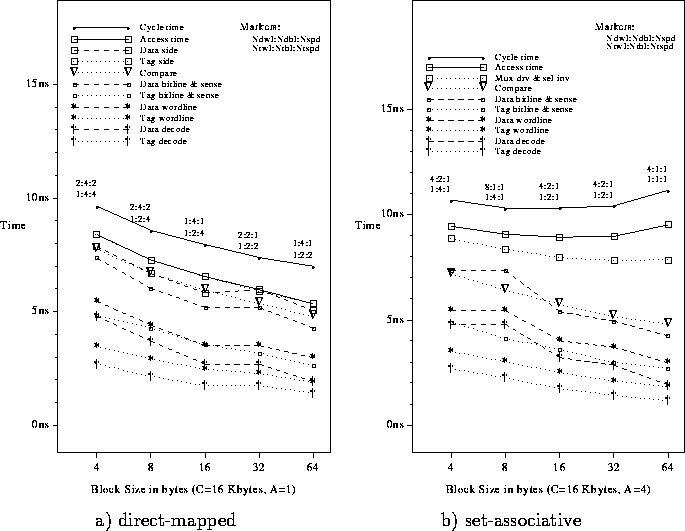
Figure 18 shows how the access and cycle times are affected by the block size (the cache size is kept constant). In the direct-mapped graph, the access and cycle times drop as the block size increases. Most of this is due to a drop in the decoder delay (a larger block decreases the depth of each array and reduces the number of tags required).
Figure 18: Access/cycle time as a function of block size
In the set-associative case, the access and cycle time begins to increase as the block size gets above 32. This is due to the output driver; a larger block size means more drivers share the same cache output line, so there is more loading at the output of each driver. This trend can also be seen in the direct-mapped case, but it is much less pronounced. The number of output drivers that share a line is proportional to A, so the proportion of the total output capacitance that is the drain capacitance of other output drivers is smaller in a direct-mapped cache than in the 4-way set associative cache. Also, in the direct-mapped case, the slower output driver only affects the data side, and it is the tag side that dictates the access time in all the organizations shown.